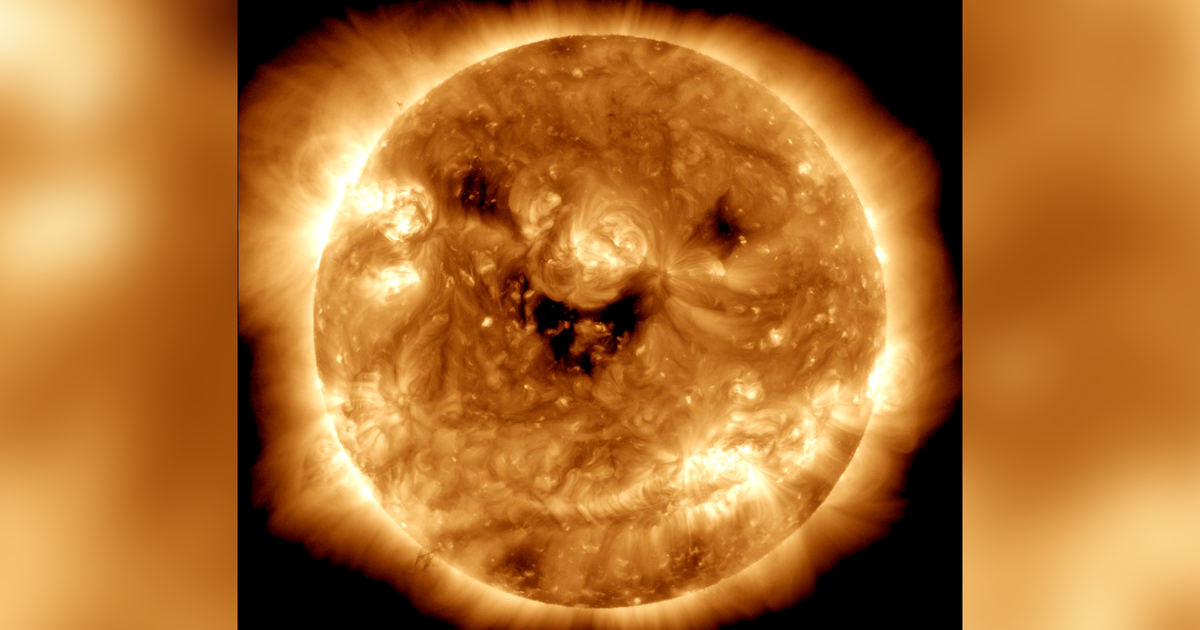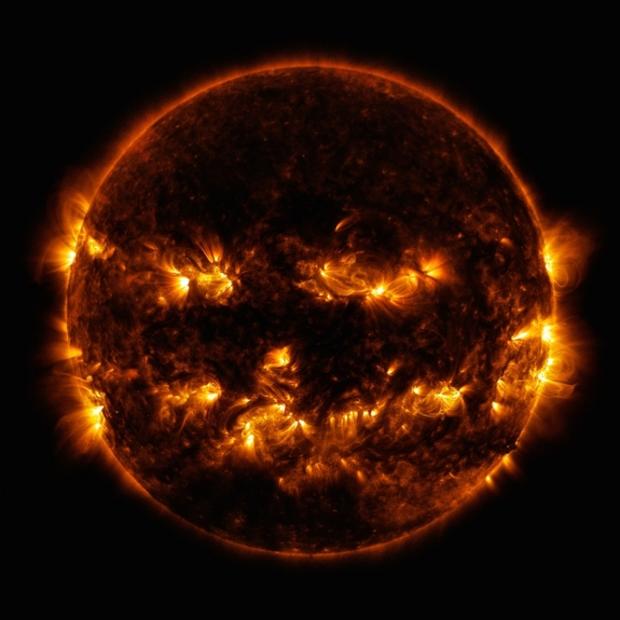NASA took a picture of a “giant space pumpkin”. Here’s the science behind the “smiling” sun.

This year’s Halloween spirit was out of this world. Ahead of the costume-filled, candy-filled celebration, NASA’s Solar Dynamics Observatory snapped a photo of the sun ‘smiling’ – an image that renowned cosmologists have compared to ‘a giant space pumpkin.”
The image, which shows a glowing sun with two black holes on top of another crescent-shaped “smile,” was taken on October 26.
“These dark spots on the Sun, visible in ultraviolet light, are known as coronal holes and are regions where the fast solar wind is ejected into space,” NASA tweeted.
The beautiful image of the sun was a treat, of course, but it also had tricks. Trio coronary hole suggested a observation of small geomagnetic storms on Saturday, NOAA’s Space Weather Prediction Center warned that the holes are expected to “enhance and disrupt the solar wind environment and lead to unstable conditions.”
Coronary holes, according to NASA, are regions of the sun that appear dark because they are colder and less dense than the surrounding regions and have exposed magnetic fields. These characteristics allow “relatively fast solar wind streams” to escape more easily. Holes can form at any time and place on the sun, and winds can cause geomagnetic storms, rank on a scale from G1 (minor) to G5 (extreme), which can disrupt the power supply and other systems on Earth, as well as affect the operation of spacecraft.
According to the center, even minor storms can cause “slight fluctuations in the power grid” and affect the operation of satellites and migrating animals. These storms also cause the northern lights to become more visible further south.
During the strongest storm, some grid systems may experience “total collapse,” and the aurora can be seen as far south as Florida and southern Texas.
“Unsettled conditions” are expected to continue until Wednesday, the center said last week. However, since Monday there are no geomagnetic storms or “significant transient or periodic solar wind features” are expected. On Sunday, the center said there were “no geomagnetic storms” last week.
In 2014, the sun looked like Halloween when NASA took photos of the sun that looked like the spooky jack-o-lantern. The spine-tingling glow from the sun was caused by areas emitting more light and energy, NASA said at that time.
NASA/SDO
https://www.cbsnews.com/news/nasa-smiling-sun-image-giant-space-pumpkin/





